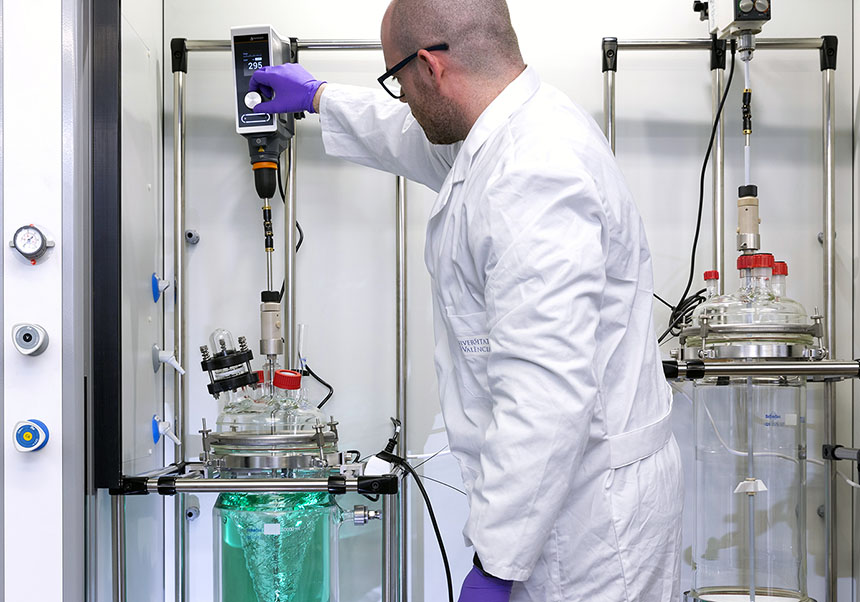
A team led by the Institute of Molecular Science (ICMol) of the University of Valencia has developed a method for creating nickel- and iron-based catalysts that are more efficient and scalable for green hydrogen production through water electrolysis. This technology has been patented by the academic institution and licensed to Matteco — a spin-off of the University of Valencia — for industrial exploitation and technology transfer. The work has been published in Nature Communications.
The production of green hydrogen through electrolysis requires efficient and sustainable materials. A major challenge in this field is to improve the oxygen evolution reaction — a key step in the development of electrochemical devices such as electrolysers and fuel cells — without relying on costly or difficult-to-scale materials, i.e., materials that are hard to produce abundantly for large-scale use.
In the study now published in Nature Communications, a team from the Institute of Molecular Science of the University of Valencia describes a new method for the simple and scalable fabrication of an advanced catalyst based on nickel-iron layered double hydroxides (NiFe-LDHs). Nickel and iron are two naturally abundant and non-critical elements, meaning that their use is viable, sustainable and safe for industrial application.
The new catalyst overcomes the limitations that previous nickel-iron compounds faced in terms of commercial-scale application. “We have succeeded in synthesising, in a straightforward and scalable manner, a type of material that is highly efficient for producing hydrogen with less energy. This will help make technologies like electrolysis more accessible and competitive”, says Gonzalo Abellán, researcher at ICMol and principal investigator of the project.
Specifically, the method uses an epoxide-based chemical reaction that is carried out at room temperature and under mild conditions, making the process safer and more sustainable. According to the article, the synthesised materials show a significant improvement in efficiency when integrated into an anion exchange membrane water electrolysis (AEMWE) cell.
The result is a more efficient catalytic material that significantly reduces the energy required for green hydrogen production, thereby contributing to the industrial decarbonisation goals set by the European Union’s science and climate policies.
The process and the material developed are protected by a patent owned by the University of Valencia, which is being industrialised by the spin-off Matteco in alignment with the transition towards a decarbonised energy model. The patent has been extended to more than 50 countries worldwide.
Reference:
Scalable synthesis of NiFe-layered double hydroxide for efficient anion exchange membrane electrolysis. Alvaro Seijas-Da Silva, Adrian Hartert, Víctor Oestreicher, Jorge Romero, Camilo Jaramillo-Hernández, Luuk J. J. Muris, Grégoire Thorez, Bruno J. C. Vieira, Guillaume Ducourthial, Alice Fiocco, Sébastien Legendre, Cristián Huck-Iriart, Martín Mizrahi, Diego López-Alcalá, Anna T. S. Freiberg, Karl J. J. Mayrhofer, João C. Waerenborgh, José J. Baldoví, Serhiy Cherevko, Maria Varela, Simon Thiele, Vicent Lloret & Gonzalo Abellán. Nature Communications volume 16, Article number: 6138 (2025)
















